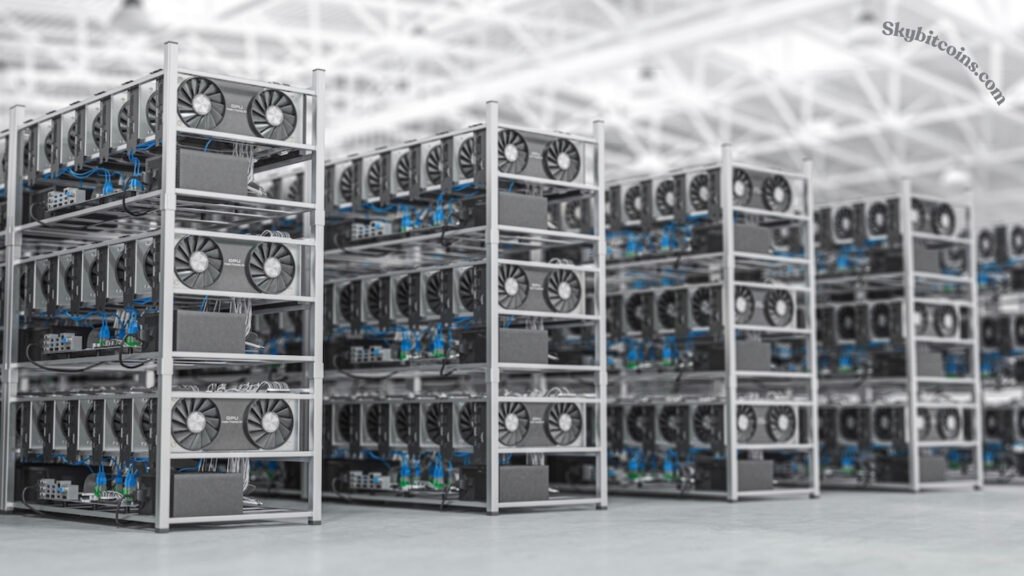The world’s first and most prominent cryptocurrency continues to dominate the digital currency landscape. One of the most critical aspects of maintaining the Bitcoin network is mining. The process by which new bitcoins are generated and transactions are verified. Over the past decade, Bitcoin mining has evolved from a hobbyist activity to a highly industrialized operation, with large-scale mining farms at the forefront of this evolution. This article provides an updated overview of Bitcoin mining farms as of 2025, examining. The technological advancements, environmental concerns, and regulatory challenges they face.
The Evolution of Bitcoin Mining Farms
In the early days of Bitcoin, mining was a relatively simple task that could be done using a standard home computer’s CPU or GPU. However, as the Bitcoin network grew and the mining difficulty increased, more computational power was required to solve the cryptographic puzzles that secure the network. This led to the development of Application-Specific Integrated Circuits (ASICs), specialized hardware designed specifically for Bitcoin mining.
As ASICs became the standard, Bitcoin mining shifted from small-scale operations to more extensive, centralized mining farms. These facilities, often located in regions with cheap electricity, favourable climate conditions, and supportive regulatory environments, house thousands of mining rigs working around. The clock to mine new bitcoins. Mining farms have become essential to the Bitcoin network, contributing the vast majority of its hash rate, a measure of the computational power dedicated to mining.
Technological Advancements
The last few years have seen significant technological advancements in Bitcoin mining. Modern mining farms are equipped with state-of-the-art ASICs, which are more energy-efficient and powerful than their predecessors. The latest models, such as the Bitmain Antminer S19 series and MicroBT’s WhatsMiner M50 series, boast hash rates exceeding 100 TH/s (terahashes per second) while consuming less electricity per terahash, making them more profitable for miners.

Another technological trend is the adoption of immersion cooling systems in mining farms. Traditional air-cooled systems are being replaced by liquid cooling technologies, where mining rigs are submerged in non-conductive liquids that efficiently dissipate heat. This increases the hardware’s lifespan and allows for higher overclocking, leading to increased mining efficiency.
Moreover, integrating artificial intelligence (AI) and machine learning (ML) is helping mining farms optimize their operations. AI algorithms predict optimal mining conditions, adjust power consumption in real time, and even detect hardware failures before they occur, reducing downtime and maintenance costs.
Environmental Impact
The environmental impact of Bitcoin mining has been a hotly debated topic, with critics pointing. The substantial energy consumption of mining farms. The Bitcoin network is estimated to consume more electricity annually than some small countries, leading to concerns about its carbon footprint. However, the industry is increasingly aware of these concerns and is taking steps to address them.
Many mining farms are transitioning to renewable energy sources to power their operations. Regions with abundant hydropower, such as Sichuan in China and parts of Canada, have become popular locations for mining farms. Solar and wind energy are also being explored as viable alternatives, particularly in areas with high renewable energy potential.
Additionally, the concept of “stranded energy” is gaining traction in the mining community. Stranded energy refers to excess energy generated by power plants that cannot be easily transported to where needed. Mining farms are being set up near these sources to utilize this otherwise wasted energy, turning a potential environmental liability into an asset.
Some companies are even experimenting with using the waste heat generated by mining operations for other purposes, such as heating greenhouses or residential buildings, further mitigating their environmental impact.
Regulatory Challenges
As Bitcoin mining has grown in scale and visibility, it has attracted the attention of regulators worldwide. The decentralized and often opaque nature of Bitcoin mining has led to concerns about money laundering, tax evasion, and the concentration of power within the network.
Several countries have recently introduced regulations to monitor and control Bitcoin mining activities. Once home to most of the world’s mining operations. China has implemented a sweeping ban on cryptocurrency mining, forcing many miners to relocate to more favourable jurisdictions.

In contrast, countries like Kazakhstan and Russia have welcomed Bitcoin miners, offering low electricity costs and tax incentives. However, these regions also face increased scrutiny as they grapple. The environmental and economic implications of hosting large-scale mining operations.
In the United States, regulatory attitudes towards Bitcoin mining vary by state. While some states, like Texas and Wyoming, have positioned themselves. They are crypto-friendly, others, like New York, have imposed stricter regulations, including moratoriums on new mining operations until their environmental impact can be assessed.
The global nature of Bitcoin mining challenges regulators. Who must balance the economic benefits of hosting mining operations with the potential risks. As regulatory frameworks continue to evolve, mining farms must adapt to ensure compliance while maintaining profitability.
The Future of Bitcoin Mining Farms
Looking ahead, the future of Bitcoin mining farms will be shaped by a combination of technological innovation, environmental considerations, and regulatory developments. The continued push towards energy efficiency and sustainability will likely drive further advancements in mining hardware and cooling technology. In contrast, the integration of AI and ML will continue to optimize operations.
The geographic distribution of mining farms may also shift as miners seek out regions with favourable regulations and abundant renewable energy resources. With their untapped renewable energy potential, emerging markets in Africa and South America could become new hotspots for Bitcoin mining.
However, the industry will need to navigate an increasingly complex regulatory landscape. As governments worldwide grapple with the implications of cryptocurrency mining. The miners will need to engage with regulators and stakeholders to ensure the long-term viability of their operations.
Conclusion
Bitcoin mining farms have come a long way from the days of hobbyist miners running software on their personal computers. Today, these large-scale operations are critical to the security and functioning of the Bitcoin network. Mining farms will play a central role in shaping the industry as it evolves. The future of Bitcoin, balancing technological innovation with environmental responsibility and regulatory compliance.


